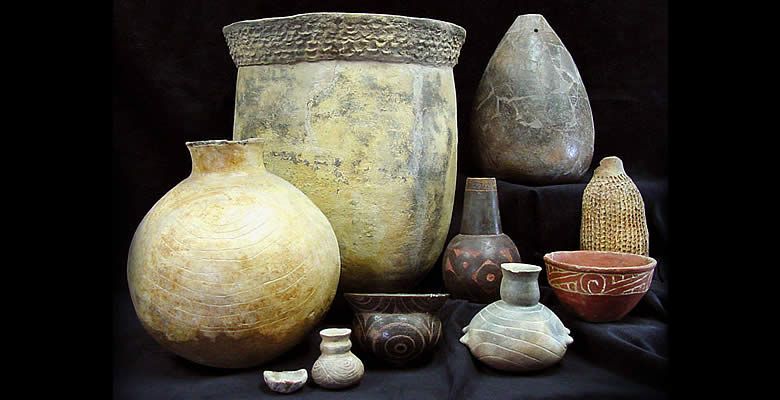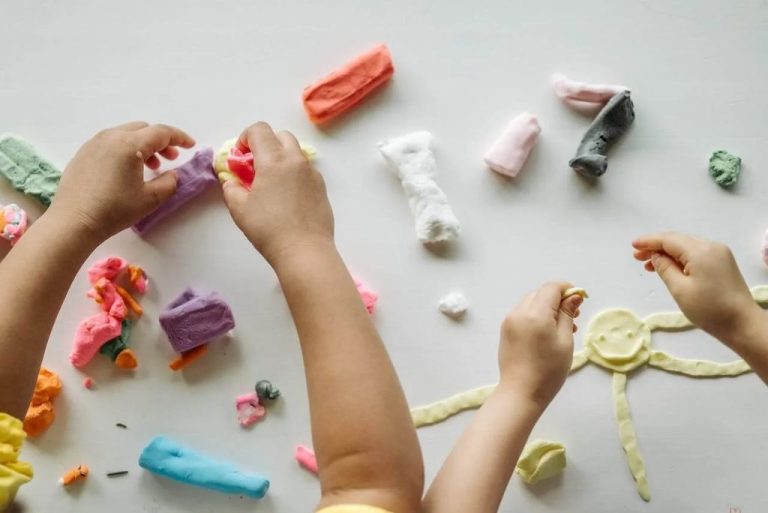What Is The Oldest Pottery In The United States?
Pottery is one of the most enduring artifacts that provides insight into past cultures and civilizations. Tracing the origins and development of pottery traditions in the United States offers a unique window into the lives, beliefs, and practices of the earliest inhabitants of this land. This article will provide an overview of the beginnings of pottery making in North America, highlighting major traditions and techniques developed by Native American peoples across different regions. Understanding the roots of this ancient craft sheds light on everything from foodways to trade routes of early societies. By exploring the timeline and contexts surrounding the emergence of the oldest pottery on this continent, we gain a richer appreciation for the ingenuity and artistry of past potters whose legacy continues to inspire modern makers today.
Defining Pottery
Pottery refers to objects made from clay that have been shaped or molded and then hardened through heating at high temperatures. The clay used for pottery contains minerals that transforms at high heat, making the finished product more durable and water resistant. Pottery includes a wide range of clay products like earthenware, stoneware, and porcelain used for purposes such as storage, cooking, and serving food and beverages.
There are several major types of pottery defined by the temperature at which they are fired and the clay composition:
- Earthenware – Fired at lower temperatures, up to 2,200°F. Earthenware is porous and brittle. Common uses include flower pots and decorative pieces. [1]
- Stoneware – Non-porous and more durable than earthenware, fired between 2,200°F – 2,600°F. Used for kitchenware and bottling. [2]
- Porcelain – Fired at very high temperatures above 2,300°F. Porcelain is highly vitrified and non-porous. Used for tableware, art objects, and sanitary ware. [3]
Pottery served essential roles in storage, cooking, and serving food for thousands of years before other materials replaced these functions.
Early Pottery in North America

Evidence shows that indigenous peoples across North America were making pottery thousands of years ago. The earliest known pottery remains in North America originate from the Stallings Island site near Augusta, Georgia, dating back over 4,500 years ago, around 2500 BCE (Source). These early vessels were created by peoples of the Stallings culture who inhabited the Savannah River valley region. The pottery was constructed using a fiber-tempered technique, with plant material mixed into the clay to provide stability during firing. Other early pottery traditions also developed independently among cultures across North America over the following millennia.
In the American Southwest, pottery production began with more primitive brown wares around 1500 BCE, developing over time into beautiful painted pottery and vessels featuring black geometric designs on white backgrounds (Source). In the Eastern Woodlands, pottery emerged among the Adena, Hopewell, and Mississippian cultures beginning around 100 BCE. Unique pottery styles also arose from ancestral Puebloan peoples in the Four Corners region.
Overall, pottery making originated among diverse indigenous peoples across North America over several thousand years, with the oldest confirmed remains found at Georgia’s Stallings Island site dating back over 4,500 years.
Pottery of Ancient Pueblo Peoples
The early pottery traditions of ancestral Puebloan peoples in the American Southwest date back over 4,000 years to around 2000 BCE. The ancestral Puebloans, also known as the Anasazi, were skilled artisans who created beautifully painted pottery for utilitarian as well as ceremonial purposes. Their early pottery styles included plain gray pottery and black-on-white painted designs.
According to https://en.wikipedia.org/wiki/Pueblo_pottery, the first painted pottery emerged around 500 BCE with the introduction of red slip on buff clay pots. By 700 CE, Ancestral Puebloan potters perfected their techniques and produced some of the finest prehistoric painted pottery in North America. Their signature styles featured elegant black-on-white geometric patterns, red and black painted designs, and innovative vessel forms.
Pottery played an integral role in Puebloan culture and was used for cooking, storage, and ritual ceremonies. Distinctive pottery designs and vessel shapes can often identify archaeological sites and culture groups across the Four Corners region. The exquisite pottery of ancient Puebloan peoples represents a rich artistic tradition stretching back millennia.
Woodland Pottery Traditions
The Woodland period in North America, lasting from around 1000 BCE to 1000 CE, saw the rise of sophisticated pottery craft among cultures like the Hopewell across eastern North America. Potters during this time became highly skilled at creating a variety of vessel forms and surface decorations.
Early Woodland vessels were often made using the coil method and smoothed into shape with paddles wrapped with cord or fabric, creating a distinctive cordmarked surface. Decoration included impressing the clay with netsinkers, shells, or carved paddles. Over time, Woodland pottery became thinner and more refined as potters gained better control over firing techniques. Distinct regional styles emerged such as Swift Creek Complicated Stamped pottery along the Atlantic coast and Havana Styles like Havana Zoned pottery in the Illinois River valley.
The most renowned pottery was produced by the Hopewell culture, centered in Ohio. Hopewell vessels display incredible artistry and craftsmanship. Their pottery reflects extensive trade networks, incorporating materials like copper, mica sheets, and obsidian from distant sources. Hopewell potters produced stunning works with fine incised lines, check stamping, and symbolic imagery of humans, animals, and abstract designs. The uniformity and widespread distribution of Hopewell pottery styles indicates these spectacular ceramics were produced by highly skilled specialists.
Sources:
https://www.palomar.edu/users/ddozier/course_notes/regions/woodland_files/Woodlands%20pottery.htm
https://www.nativehistoryassociation.org/woodland.php
Mississippian Culture Pottery
The Mississippian culture emerged around 800 CE in the midwestern and southeastern United States. They were known for their large earthen mound structures and advanced pottery techniques. One of their largest settlements was at Cahokia, located near modern St. Louis, which was inhabited from around 600–1400 CE.
Cahokian pottery utilized local clays and included practical jars, bowls, plates, and cups as well as more ornate ceremonial pieces. Their pottery was coil-built or made using a slow wheel, and they created unique shapes like effigy vessels depicting animals, humans, and mythological creatures. Cahokian potters fired ceramics in wood-fueled kilns to produce earthenware with a slightly porous texture.
Decorative techniques included engraving, incising, and stamping patterns into wet clay. Distinctive styles featured geometric shapes, images of war and religion, and motifs like the birdman and weeping eye. Red and white slips were frequently applied. Cahokian pottery was traded extensively and influenced surrounding cultures. Along with sculpture and copperwork, ceramics demonstrate the Mississippian mastery of art and technology.
Colonial Era Pottery
Native Americans had produced pottery for thousands of years before European colonists arrived in the 17th century. However, the early English and Dutch colonists brought their own pottery-making traditions and techniques to the New World. Pottery craft was an important domestic industry among the colonists in the early 1600s.
The Jamestown colony in Virginia, established in 1607, relied on shipped goods from England for the first few years. But colonists soon recognized the need to become more self-sufficient, and local pottery production began by 1608 (1). The earthernware produced at Jamestown was basic and functional – simple pots, pans, plates, mugs and storage jars formed from locally available red clay. Unglazed redware was the most common type of pottery found at Jamestown archaeological sites (1).
Likewise, colonists in New England began setting up pottery operations in the early 1600s to meet local needs. The earliest known pottery produced in New England was made around 1630 in the Massachusetts Bay Colony settlements of Salem, Charlestown and Boston (2). The colonists fashioned earthenware pots and containers from clay found along the rivers.
In general, colonial pottery was a low-quality, rustic ware compared to English ceramics of the time. But it served an important purpose in the developing colonies and helped enable more self-sufficiency.
(1) “Pottery at Jamestown – Historic Jamestowne Part of …”
(2) Watkins, Lura Woodside. Early New England Potters and Their Wares. Harvard University Press, 1950.
Oldest Known Pottery
The oldest known pottery in North America comes from an archaeological site along the Savannah River near Augusta, Georgia called Stallings Island. Excavations at Stallings Island have uncovered fiber-tempered pottery that has been radiocarbon dated to around 2500 BCE, making it over 4500 years old.
According to the Portals to the Past website, this Stallings Island pottery dates to the Late Archaic period and represents some of the earliest ceramics found in North America so far http://portaltothepast.newsouthassoc.com/sample-page/pottery/. The pottery is characterized by a sandy paste and the inclusion of Spanish moss fiber as a tempering material.
Similar fiber-tempered pottery has been found at other Late Archaic sites along the Savannah River, dating to between 2500-1200 BCE. This indicates that fiber-tempered pottery technology emerged among Archaic foraging societies in this region as early as 4500 years ago.
Significance
Identifying the oldest pottery in the United States provides critical insight into the lives and cultures of the earliest inhabitants of North America. Pottery artifacts are an invaluable source of information about past technologies, trade networks, cultural practices, and more. According to the Portaltothepast.com, “Pottery is an important indicator of cultural change. New techniques for manufacturing pots spread from one area to another and help archaeologists trace relationships between ancient peoples.”
By studying the oldest pottery, archaeologists can better understand the lifestyles and social customs of the first communities in the Americas. Analyzing early pottery styles and techniques also enables researchers to trace connections between disparate cultures across North and South America. As noted by Ceramics.org, identifying the age of the most ancient pottery artifacts “gives us a way to trace back the history of social organization and technology.”
In summary, pinpointing the origins of pottery making allows historians and anthropologists to fill in gaps about the early inhabitations of the Americas. Tracing the spread of pottery illuminates how ideas traveled between diverse cultures in ancient times. The quest to find the oldest pottery artifacts drives new discoveries about humanity’s early history.
Conclusion
After reviewing the long history of pottery crafts in the early Americas, several key takeaways emerge. First, pottery was being created and fired in North America as far back as 2500 BCE by prehistoric Pueblo peoples. The quality and artistry of their works, including intricate painted designs and innovative firing techniques, reveal their mastery of the medium. Later groups like the Woodland, Mississippian, and Early Colonial cultures expanded on these ancient pottery traditions and evidence of their works can still be found at archaeological sites today.
The oldest confirmed pottery vessels found in the United States date back over 4000 years to approximately 2500-2000 BCE. They were created by pre-Pueblo people living in the American Southwest. These early pieces reflect incredible technical skill in crafting fine ceramics from local clays and decorating them with painted designs. Their lasting beauty stands as a testament to how pottery craftsmanship evolved with early North American cultures.
Ultimately, the origins of pottery in the Americas provide a fascinating lens into indigenous cultures. Studying ancient vessels gives insight into prehistoric technologies, artistry, trade networks, and daily life stretching back millennia. It demonstrates the ingenuity and creativity of early pottery artisans whose works continue to amaze and inspire us today.


